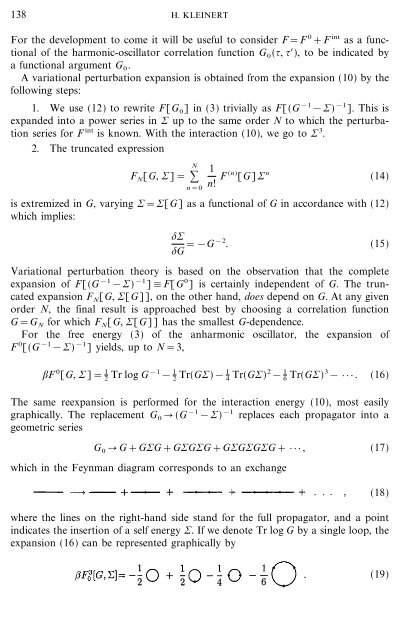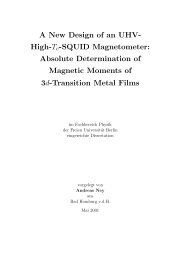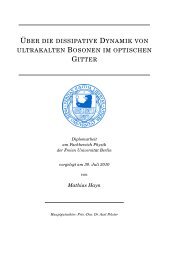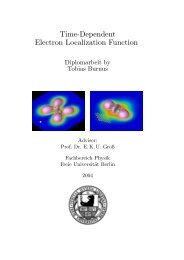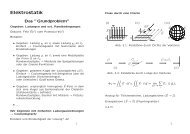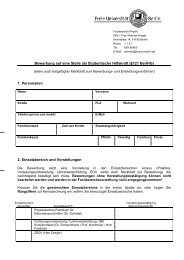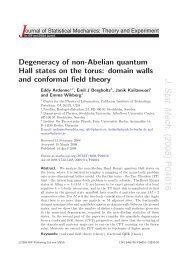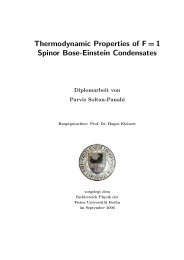ap online
ap online
ap online
You also want an ePaper? Increase the reach of your titles
YUMPU automatically turns print PDFs into web optimized ePapers that Google loves.
138 H. KLEINERT<br />
For the development to come it will be useful to consider F=F 0 +F int as a functional<br />
of the harmonic-oscillator correlation function G 0 ({, {$), to be indicated by<br />
a functional argument G 0 .<br />
A variational perturbation expansion is obtained from the expansion (10) by the<br />
following steps:<br />
1. We use (12) to rewrite F[G 0 ] in (3) trivially as F[(G &1 &7) &1 ]. This is<br />
expanded into a power series in 7 up to the same order N to which the perturbation<br />
series for F int is known. With the interaction (10), we go to 7 3 .<br />
2. The truncated expression<br />
N<br />
1<br />
F N [G, 7]= :<br />
n! F (n) [G]7 n (14)<br />
n=0<br />
is extremized in G, varying 7=7[G] as a functional of G in accordance with (12)<br />
which implies:<br />
$7<br />
$G =&G&2 . (15)<br />
Variational perturbation theory is based on the observation that the complete<br />
expansion of F[(G &1 &7) &1 ]#F[G 0 ] is certainly independent of G. The truncated<br />
expansion F N [G, 7[G]], on the other hand, does depend on G. At any given<br />
order N, the final result is <strong>ap</strong>proached best by choosing a correlation function<br />
G=G N for which F N [G, 7[G]] has the smallest G-dependence.<br />
For the free energy (3) of the anharmonic oscillator, the expansion of<br />
F 0 [(G &1 &7) &1 ] yields, up to N=3,<br />
;F 0 [G, 7]= 1 2<br />
Tr log G &1 & 1 2<br />
Tr(G7)& 1 4<br />
Tr(G7) 2 & 1 6<br />
Tr(G7) 3 & } } } . (16)<br />
The same reexpansion is performed for the interaction energy (10), most easily<br />
gr<strong>ap</strong>hically. The replacement G 0 (G &1 &7) &1 replaces each propagator into a<br />
geometric series<br />
G 0 G+G7G+G7G7G+G7G7G7G+ } } } , (17)<br />
which in the Feynman diagram corresponds to an exchange<br />
where the lines on the right-hand side stand for the full propagator, and a point<br />
indicates the insertion of a self energy 7. If we denote Tr log G by a single loop, the<br />
expansion (16) can be represented gr<strong>ap</strong>hically by<br />
(18)<br />
(19)


